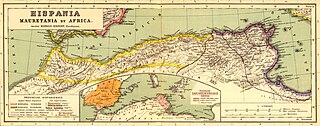
Mauretania is the Latin name for a region in the ancient Maghreb. It extended from central present-day Algeria to the Atlantic, encompassing northern present-day Morocco, and from the Mediterranean in the north to the Atlas Mountains. Its native inhabitants, of Berber ancestry, were known to the Romans as the Mauri and the Masaesyli.

Mauretania Caesariensis was a Roman province located in what is now Algeria. The full name refers to its capital Caesarea Mauretaniae.
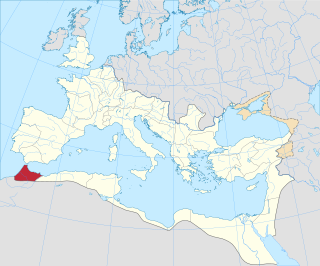
Mauretania Tingitana was a Roman province, coinciding roughly with the northern part of present-day Morocco. The territory stretched from the northern peninsula opposite Gibraltar, to Sala Colonia and Volubilis to the south, and as far east as the Mulucha river. Its capital city was Tingis, which is the modern Tangier. Other major cities of the province were Iulia Valentia Banasa, Septem, Rusadir, Lixus and Tamuda.
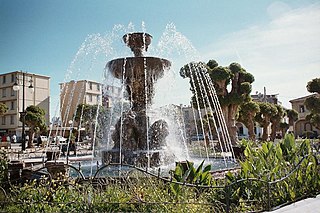
Cherchell is a town on Algeria's Mediterranean coast, 89 kilometers (55 mi) west of Algiers. It is the seat of Cherchell District in Tipaza Province. Under the names Iol and Caesarea, it was formerly a Roman colony and the capital of the kingdoms of Numidia and Mauretania.
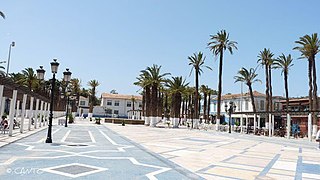
Arzew or Arzeu is a port city in Algeria, 25 miles (40 km) from Oran. It is the capital of Arzew District, Oran Province.

Saldae was an important port city in the ancient Roman Empire, located at today's Béjaïa. It was generally a crossroads between eastern and western segments of Northern Africa, from the time of Carthage to the end of the Byzantine Empire from the continent.

Theveste was a Roman colony situated in what is now Tébessa, Algeria.

Djémila, formerly Cuicul, is a small mountain village in Algeria, near the northern coast east of Algiers, where some of the best preserved Roman ruins in North Africa are found. It is situated in the region bordering the Constantinois and Petite Kabylie.

Rusadir was an ancient Punic and Roman town at what is now Melilla, Spain, in northwest Africa. Under the Roman Empire, it was a colony in the province of Mauretania Tingitana.
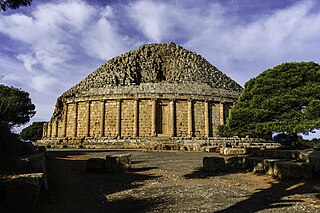
The Royal Mausoleum of Mauretania is a funerary monument located on the road between Cherchell and Algiers, in Tipaza Province, Algeria.

Bethioua, formerly Arsenaria, Portus Magnus, Arzew, Vieil Arzew, and Saint Leu, is a port town and district near Arzew in Oran Province in northwestern Algeria. It has a gas port, petrochemical facilities and desalination plant.

Altava was an ancient Romano-Berber city in present-day Algeria. It served as the capital of the ancient Berber Kingdom of Altava. During the French presence, the town was called Lamoriciere. It was situated in the modern Ouled Mimoun near Tlemcen.
A number of Roman ports were known as portus magnus :

Auzia was a Roman-Berber colonia in present-day Sour El-Ghozlane, Algeria. The area was located around 150 km south-east of Algiers, in the ancient province of Mauretania Caesariensis.

Igilgili was a Berber town and a Phoenician, Carthaginian, and Roman colony in located in present-day Jijel, Algeria.

Rapidum was a Roman settlement and fort located in Mauretania Caesariensis, nearly 100 km south of Icosium (Algiers).

Cartennae or Cartenna was an ancient Carthaginian and Roman port at present-day Ténès, Algeria. Under the Romans, it was part of the province of Mauretania Caesariensis.

Roman colonies in North Africa are the cities—populated by Roman citizens—created in North Africa by the Roman Empire, mainly in the period between the reigns of Augustus and Trajan.

Castra Nova was a Roman-era city and diocese in Mauretania, Africa Proconsulare. The town is identified with the stone ruins at Mohammadia, Mascara in modern Algeria. It is now a Roman Catholic titular see.
The Limes Mauretaniae was a portion of a 4,000-kilometre (2,500 mi) Roman fortified border (limes) in Africa approximately 100 kilometres (62 mi) south of the modern day Algiers.


















